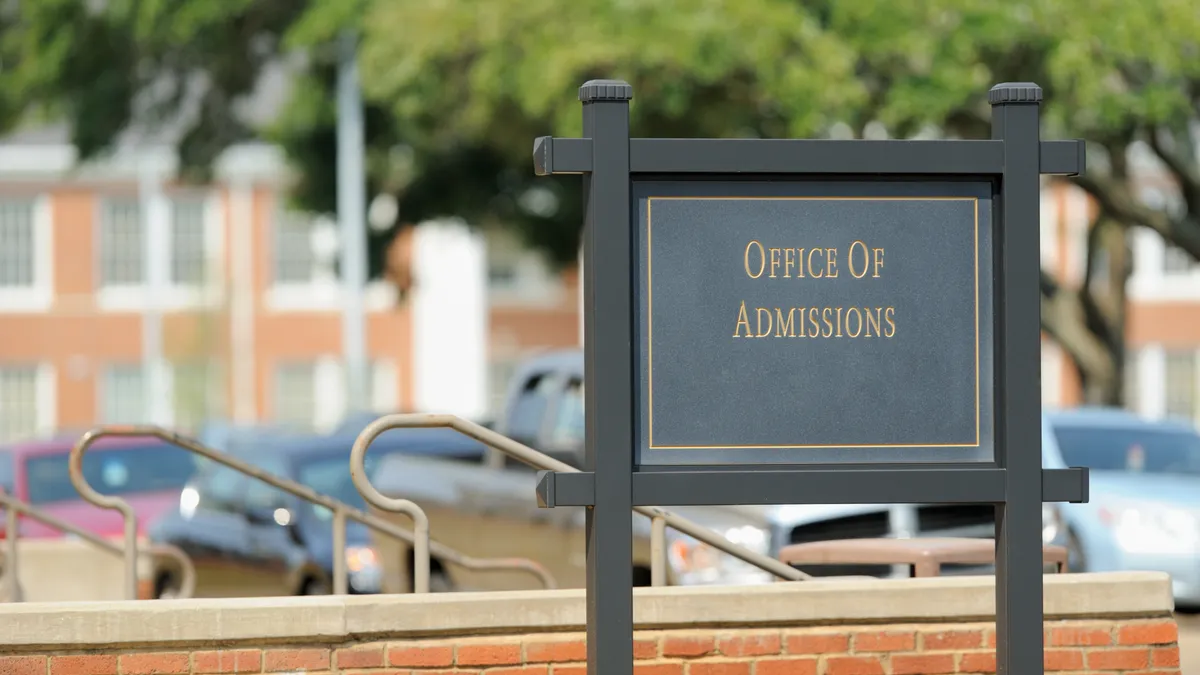Federal data show dual enrollment — a process allowing high school students to take college-level courses for postsecondary credit — is gaining steam within the education sector.
Between the 2002–03 and 2010–11 academic years, the number of students taking college-level courses within a dual-enrollment program increased 80% to 1.2 million, according to data from the National Center for Education Statistics. States are following the trend. For example, Illinois passed a law this month that will allow students to take an unlimited number of dual-credit classes.
For many in the industry, dual-enrollment practices look great on paper, offering a jump-start on an advanced education. Yet critics question whether this opportunity is truly accessible and therefore effective. Does dual enrollment actually lead to more college-going for all kinds of students or just some? And what can institutions to do help close the achievement gap?
Dual credit correlates to college-going behavior
Dual enrollment's goal of giving talented students a taste of college life and a jump-start on furthering their education and career is a key reason for its popularity, said Elisabeth Barnett, senior research scientist at the Community College Research Center.
"If students take dual enrollment, they are more likely to finish high school and persist in college," Barnett said. "There's also a fair amount of conversation going on about how dual credit might help more students who could be on the fence come out of high school more prepared or likely to go to college."
Data from the National Student Clearinghouse Research Center show that in the fall of 2010, 15% of U.S. community college entrants were high school dual-enrollment students. The figure comes from the research group's 2017 report on how students taking such courses fare after secondary school, tracking more than 200,000 high school students from 2010 to 2016.
The report found that only 12% of those dually enrolled high school students didn't go on to enroll in some form of college by the age of 20, with 41% of dually enrolled students going on to a four-year college. Of the other 47% of students who first matriculated in community college between the ages of 18 and 20, 84 percent went to the institution where they were taking the dual enrollment courses.
Those figures suggest time in the postsecondary classroom can lead to more college-going behavior, said Jason Taylor, assistant professor of education leadership and policy at the University of Utah.
"We know that a significant portion of colleges' overall full-time enrollment is from high school students," Taylor said. "From that perspective, I do think we see the numbers increasing. My assumption is that many colleges see dual enrollment as a viable strategy for getting more students to college."
However, there's a catch
While studies show students enrolled in dual-credit courses tend to go on to postsecondary education, access to those classes may not be available to everyone. After all, when dual enrollment was first introduced, it wasn't intended to be, Taylor said.
"Dual enrollment emerged as sort of a pathway for higher achieving students — a way to provide more challenging courses for students who might be college bound or students who are already high achieving," he said.
This often means lower-income students of color and first-generation students are less likely to participate in significant numbers. "In some ways, dual enrollment is where we see inequities in participation," he said.
A 2017 federal study on dual credit in Oregon’s public colleges came to a similar conclusion. It found that students in dual-credit programs at community colleges "are more likely to be white, female, high achievers, and not economically disadvantaged." Across all socioeconomic groups, students who were eligible for free and reduced school lunches were less likely to take dual credit courses.
The results break down by race, too. Of about 135,800 students in this category, only 12.4% of black students enrolled, compared to 22.9% of whites and 29.9% of Asians between the 2005–06 and 2012–13 academic years.
A study of dual-credit programs in Texas, where state law requires districts to offer dual-credit opportunities, came to a similar conclusion. The 2017 interim report from the Rand Corp. analyzed outcomes data from these programs between 2000 and 2015, finding that participation rates for students eligible for free and reduced lunches peaked at 18% in 2011, compared to 27% for non-eligible students. By 2015 those shares had fallen slightly to 13% and 23%, respectively.
"Dual enrollment emerged as sort of a pathway for higher achieving students — a way to provide more challenging courses for students who might be college bound or students who are already high achieving."

Jason Taylor
Assistant professor of education leadership and policy, University of Utah
In many states, there's already a recognition among industry stakeholders of how unequal dual enrollment can be, said Adam Lowe, executive director of the National Alliance of Concurrent Enrollment Partnerships (NACEP). He said steps are being taken to make the opportunity more accessible at the K–12 level, but without greater attention, the achievement gap between wealthier and less well-off students is likely to grow, continuing the demographic imbalance in dual-enrollment programs.
"The challenge is making sure we harness what we know to be a good program to further our societal goals around postsecondary education, which includes reducing attaining gaps," he said, noting that NACEP adopted a mission statement saying all students should have access to dual-credit college courses.
There's work to be done with this, he said, "but if you look around the country, we've got places like Indiana where more and more students are taking at least one college-level course. Now, we're clearly not talking about just the top 5% of students. But that's not the case for every location."
He mentioned Mississippi, where there are no state policies in support of dual enrollment. The cost of taking college-level classes without financial aid, he explained, is just one way the opportunity can lead to achievement gaps.
"That's why it takes a real intentionality to design programs that all students can benefit from," Lowe said, citing Indiana, where students eligible for free and reduced lunches can take dual-credit courses for free and costs are reduced for moderate-income students at public schools.
What's the role of colleges in dual enrollment?
Dual-enrollment policies are highly dependent on individual state practices and how K–12 districts operate. But institutions still have a major stake in how these programs are run, Lowe said. For one, these programs are part of the larger mission institutions have to provide education to the community around them. There's also a business case.
"State policies have a significant impact, so why would an institution try to invest in and contribute to these programs? States like Indiana are offsetting the costs for colleges, but it's not a full-tuition reimbursement," Lowe said. "But, the small incentive is enough of a reason to invest. Success in dual enrollment is demonstrative of college and career readiness, and creates a new way to look at academic success and access beyond evaluation of ACT and SAT scores. You're building out a pipeline."
Institution leaders can help make these programs more effective at attracting students from more diverse, underserved backgrounds, Barnett said. For instance, leaders need to make sure they are forming solid partnerships between their institutions and feeder high schools. They also can come up with a range of options that give different students a way in, looking for those supports while they are there, she added.
"For example, institutions can provide a 101 class that can be accessed by a wider range of students," Barnett said "Sometimes it's things like study skills, note taking, time management, understanding the expectations of college students or understanding your own future directions and desires that can help students get to these opportunities."
Expanding the understanding of what constitutes a college-level class could also help make dual-credit courses appealing to more kinds of students, Lowe said. For instance, dual enrollment could be extended to career and technical courses for professions spanning healthcare to emerging fields in technology.
"If you’ve got a strong partnership between secondary and postsecondary in career and technical courses, it's going to propel a much wider range of students beyond the high school level," Lowe said.





















